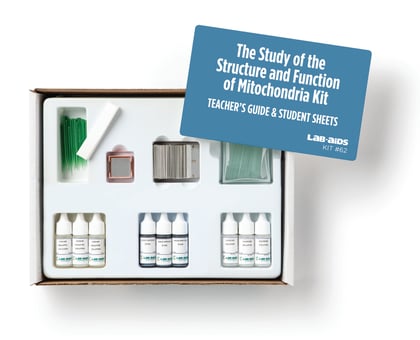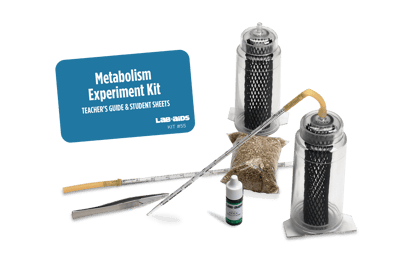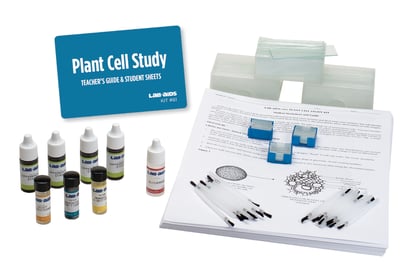Photosynthesis, Plants, and Food
In the opening activity, student teams use atom models to build carbon dioxide and water molecules then “react” them to form sugar and oxygen molecules. Students then read about plants’ essential role as producers, using the process of photosynthesis to convert carbon dioxide, water, and energy contained in light into energy stored in the bonds of sugar, and other food, molecules. They are also introduced to the plant organelles called chloroplasts that allow the production of carbohydrates, proteins and fats by using sunlight, carbon dioxide, and water.
Details at a Glance
- 2-3 Days | 2-3 ~50 minute class periods
- 2 Activities
- Accommodates unlimited classes, each with 12 groups of 2 students
- Meets our criteria for supporting literacy
- All materials are non-consumable
- Includes digital resources
Scientific Concepts
•Cells carry on the many functions needed to sustain life.
•Specialized cells perform specialized functions in multicellular organisms.
•Plants and some microorganisms are producers-they make their own food.
•For ecosystems the major source of energy is sunlight.
•Most cell functions involve chemical reactions.
•Plant cells contain chloroplasts, the site of photosynthesis. Plants and many microorganisms use solar energy to combine molecules of carbon dioxide and water into complex, energy-rich organic compounds and release oxygen into the environment.
•The energy for life primarily derives from the Sun. Plants capture energy by absorbing light and using it to form strong (covalent) chemical bonds between the atoms of carbon-containing (organic) molecules. These molecules can be used to assemble larger molecules with biological activity (including proteins, DNA, sugars, and fats). In addition, energy stored in bonds between the atoms (chemical energy) can be used as sources of energy for life processes.
•The chemical bonds of food molecules contain energy. Energy is released when the bonds of food molecules are broken and new compounds with lower energy bonds are formed.
Guides & Student Sheets
Our kits and modules provide you with everything you need so you can open, review, and teach the material confidently the next day.
- Comprehensive Teacher Guide with background information, detailed instruction, example data and answers
- Student Sheets with age appropriate background information, full procedure(s), and analysis items
- Materials necessary for the investigation (beyond common classroom items)
- Safety Data Sheets
Kit Components
- 12 Set of 8 "carbon atoms" (black, 4 pegs)
- 12 Set of 15 "hydrogen atoms" (white, 1 pegs)
- 12 Set of 20 "oxygen atoms" (red, 2 pegs)
- 12 Set of 40 "covalent bonds" (white tubes)
- Downloadable pdfs of student and teacher literature






